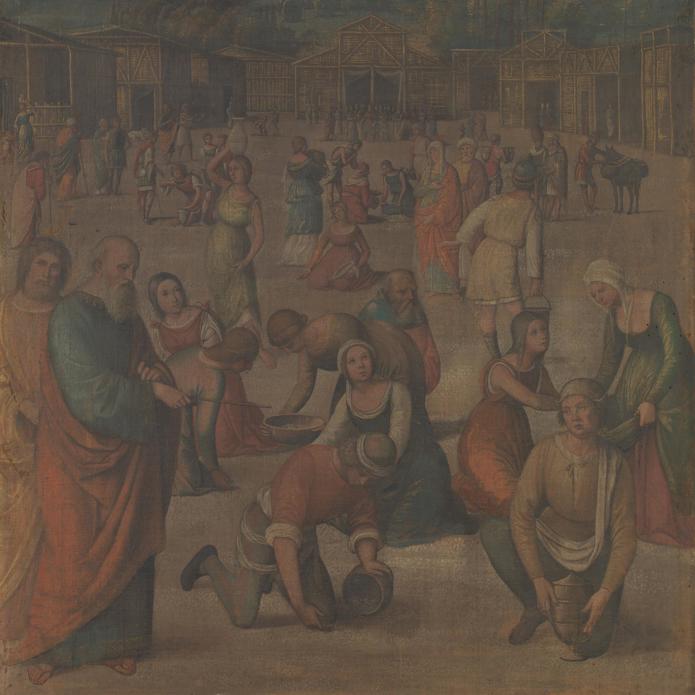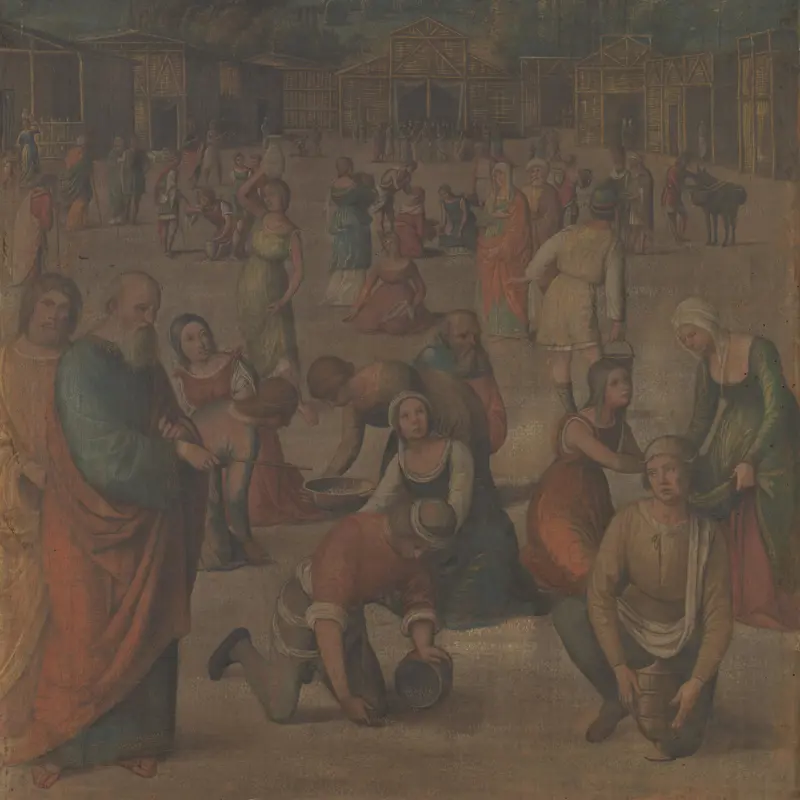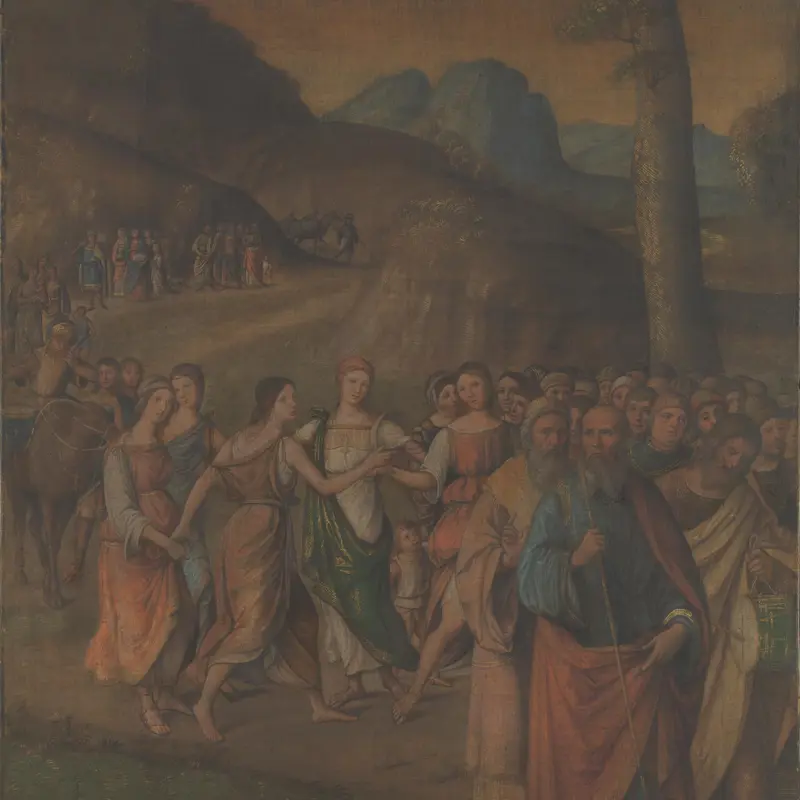Niccolò Pisano, 'The Dance of Miriam', probably 1500-3
About the work
Overview
In this rare survival – a Renaissance painting done on linen canvas – the Israelites, having escaped slavery in Egypt, are led through the wilderness by Moses and Aaron. The fleeing families, encumbered by bundles, dogs and even a monkey, make their way down a winding road. In the centre, a group of young women dance in a circle. According to the Book of Exodus (15: 20–21), Miriam, Moses‘ sister, took a timbrel and, together with other Israelite women, danced to celebrate their freedom.
This is one of a group of eight similar paintings executed by various artists, two of which are in the National Gallery’s collection. They were probably made for a small chapel or oratory in Ferrara, possibly the newly built chapel of Duke Alfonso I d’Este in the Via Coperta. Alternatively, they might have decorated the home of a member of Ferrara’s Jewish community.
Key facts
Details
- Full title
- The Dance of Miriam
- Artist
- Niccolò Pisano
- Artist dates
- 1470 - about 1536
- Part of the series
- Two Scenes from the Story of Moses
- Date made
- Probably 1500-3
- Medium and support
- Glue tempera on canvas (linen)
- Dimensions
- 119.3 × 78.7 cm
- Acquisition credit
- Layard Bequest, 1916
- Inventory number
- NG3104
- Location
- Not on display
- Collection
- Main Collection
- Previous owners
Provenance
Additional information
Text extracted from the ‘Provenance’ section of the catalogue entry in Giorgia Mancini and Nicholas Penny, ‘National Gallery Catalogues: The Sixteenth Century Italian Paintings’, vol. 3, ‘Bologna and Ferrara’, London 2016; for further information, see the full catalogue entry.
Bibliography
-
1987Gould, Cecil, National Gallery Catalogues: The Sixteenth Century Italian Schools, London 1987
-
2001
C. Baker and T. Henry, The National Gallery: Complete Illustrated Catalogue, London 2001
-
2016Mancini, Giorgia, and Nicholas Penny, National Gallery Catalogues: The Sixteenth Century Italian Paintings, 3, Bologna and Ferrara, London 2016
About this record
If you know more about this work or have spotted an error, please contact us. Please note that exhibition histories are listed from 2009 onwards. Bibliographies may not be complete; more comprehensive information is available in the National Gallery Library.
Images
About the series: Two Scenes from the Story of Moses

Overview
These two Old Testament scenes are painted not on panel, as are most surviving Italian Renaissance paintings, but on linen. They are part of a series of eight paintings on linen canvasses by various artists, which survive in various collections.
Although now rare, paintings on linen were widespread in the Renaissance. They could serve as hangings, curtains, altar frontals and banners, as well as framed works of art; they were much cheaper than tapestries, faster to execute than frescoes and easier to transport than panel paintings.
These pictures probably came from a small chapel or oratory in Ferrara. Alternatively, they might have been from the home of a member of Ferrara’s Jewish community.


